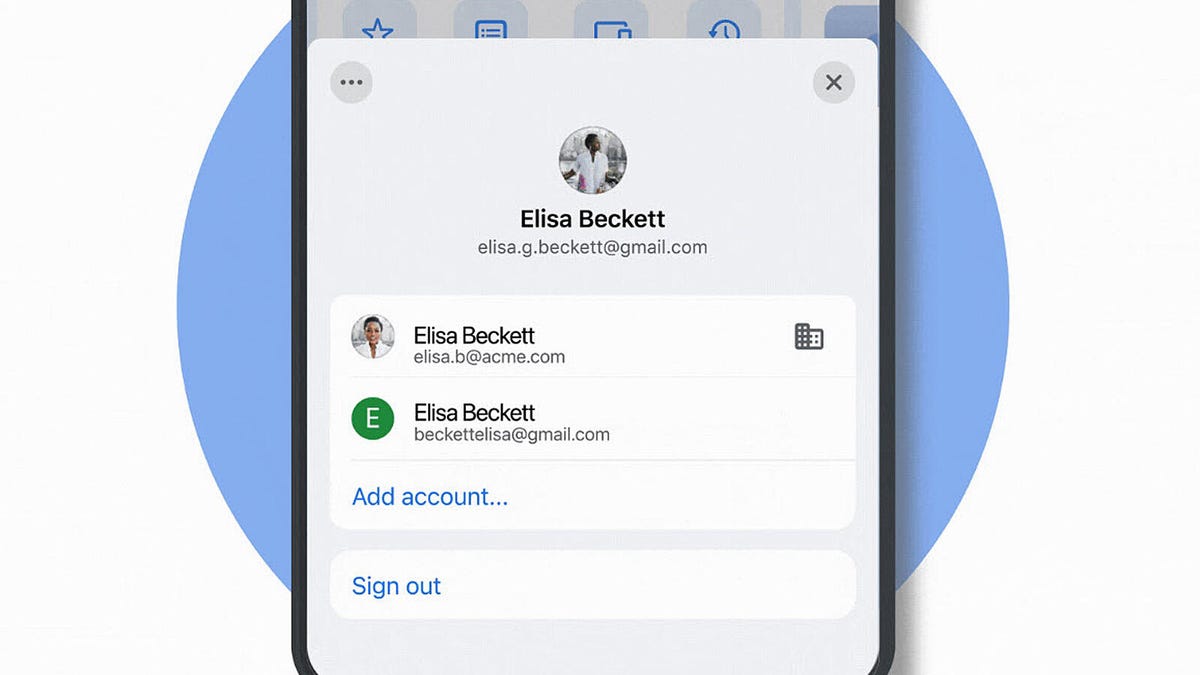The BYOD trend has been a popular way for people to use their own devices at work. But the practice often blurs the line between personal and professional, triggering security risks and other issues. Now, Google has expanded a feature designed to ease and improve the process.
On Monday, Google announced that Chrome users on iOS will now be able to switch between their work and personal accounts directly in the browser. This capability has already been available for Chrome desktop and Android users, so this expansion will cover all the major platforms in the workplace.
Chrome users have long been able to set up multiple accounts and sign in and out of each one. Rather, the new option for iPhone users covers accounts created and managed by your employer’s IT staff.
Also: Could OpenAI’s rumored browser be a Chrome-killer? Here’s what I’m expecting
“People often use their mobile device for both work and personal tasks, requiring them to sign in and out with different Google Accounts,” Google said in its blog post. “To simplify this experience while tightening security, Chrome on iOS is now offering seamless account switching with data separation for managed accounts.”
With this setup, any browsing you do in one account will be kept separate from the other. That means all the web pages, tabs, history, passwords, and other content used in your personal account won’t spill over into your work account, and vice versa. Though the separation is designed for your own devices, it also applies to employer-supplied phones, letting you more safely use them for the occasional personal task.
For this to work, your employer must set up each employee with a Chrome account strictly for business purposes. Your organization controls the managed work account and determines how browser data is handled. The first time you try to switch from your personal account to your work account, you’ll be informed how the managed one works and how your data will be handled.
One of the main drivers for separating work and personal accounts is security. Safeguarding an employee’s own personal device from cyber threats is often a challenge. But with this separation, your work account is protected. After you sign in to your managed account on iOS or Android, Chrome Enterprise can take over to provide the necessary security safeguards to prevent data exfiltration and other risks.
As one example, URL filtering is now available for iPhones just as it has been for Chrome on the desktop and Android devices. Here, an organization can block employees from visiting unallowed websites based on specific categories, instead redirecting them to approved sites. One intention is to cut down on the practice of Shadow AI in which an employee uses an unsanctioned AI site or application.
Also: You can ask Gemini AI anything directly in Google Chrome – here’s how and why you should
Chrome Enterprise can also send logs and reporting information to IT and security staffers. With this data, they can investigate any security events or issues through the Google Admin console, the Chrome logs, or a third-party security information and event management (SIEM) tool.
Google offers two flavors of Chrome Enterprise – a Core version and a Premium version. The Core edition is available for free and provides malware protection, reporting, and cloud-based management. The Premium edition costs $6 per user per month and adds the URL filtering and other advanced features.
Get the morning’s top stories in your inbox each day with our Tech Today newsletter.
